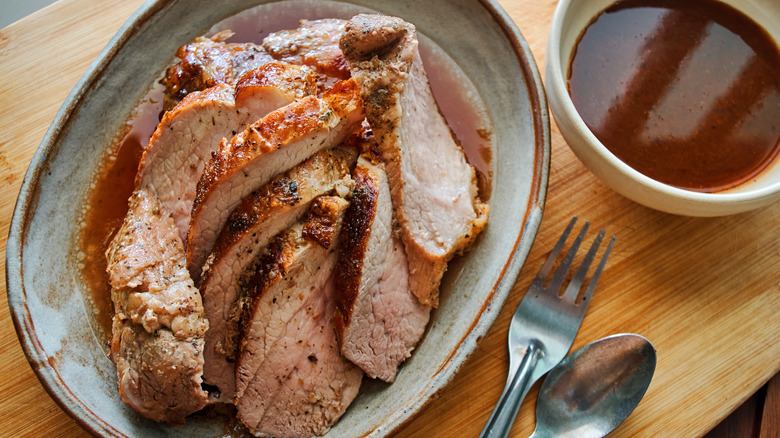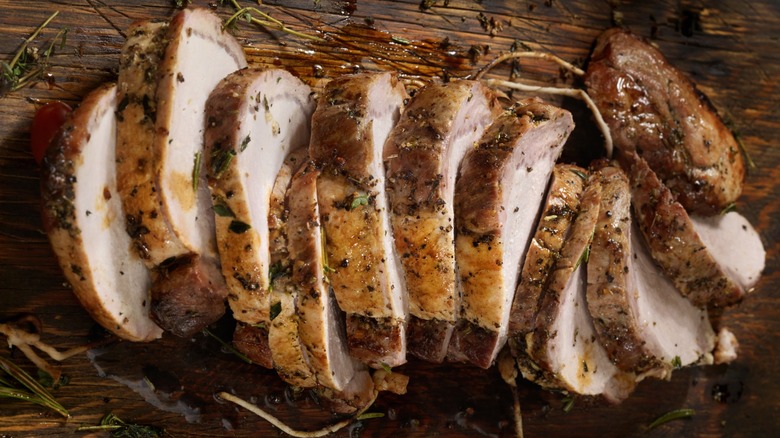The Temperature Rule To Commit To Memory For Tough Cuts Of Pork
We may receive a commission on purchases made from links.
When it's cooked well, pork is a standout among meats, whether you're a fan of barbecue ribs, a juicy pork chop, or a side of bacon. But compared to other meats, cooking pork can seem complicated to get right. A big part of this is choosing the best cooking method for the cut of pork, but it's also the long-standing fear around eating undercooked pork. Due to the risk of parasites, many fine pieces of pork have been ruined by overcooking, as home chefs err on the side of caution.
The USDA lowered the recommended internal temperature of pork in 2011 from 160 to 145 degrees Fahrenheit, assuring people that a little pink in their chops is okay. This is great news for keeping tender cuts tender, but what about the tougher cuts of pork?
The internal cooking temperature of meat isn't just about food safety, it's about making sure the meat has been heated enough to break down the collagen, which happens when you expose it to temperatures over 170 degrees Fahrenheit for an extended period of time. In this case, cooking whole cuts of pork at a maximum of 275 degrees Fahrenheit until it reaches internal temperature of between 170 and 210 degrees will result in a meat that's both safe and tender.
How to cook tough cuts of pork
If you're following a recipe, sticking to the suggested cut will always yield the best results, as the time and cooking method will have been tested against that meat. But if you're looking to experiment or want some ideas on how to work with the special offer you found at the butcher, the temperatures above should be your guide. Bear in mind that these are internal temperatures you're aiming for, so a meat thermometer is essential. There are all kinds available, but a fairly inexpensive digital one, like this Alpha Grillers one for under $20 should do the job just fine.
Pork shoulder and pork butt are two of the most common tough cuts or pork, and the fat distribution also makes them two of the most flavorful. Pork shoulder is commonly used as the cut for pork roast, and whether you opt for a classic recipe or this slow roasted Puerto Rican version, cook until you get a reading of 170 degrees, then leave to rest for at least 15 minutes before slicing.
Pork butt can be used for a roast, but it's our go-to cut for the best pulled pork. For truly shreddable pulled pork, you'll want to take it beyond the point of tender, so you'll be looking for an internal temperature of 200 and 205 degrees Fahrenheit. You might not think of pork ribs as whole cuts of meat, but the same rule applies to avoid the need to gnaw away at them. Cook to between 180 and 195 degrees Fahrenheit and you'll be rewarded with meat that falls easily off the bone, and plenty of happy dinner guests.

